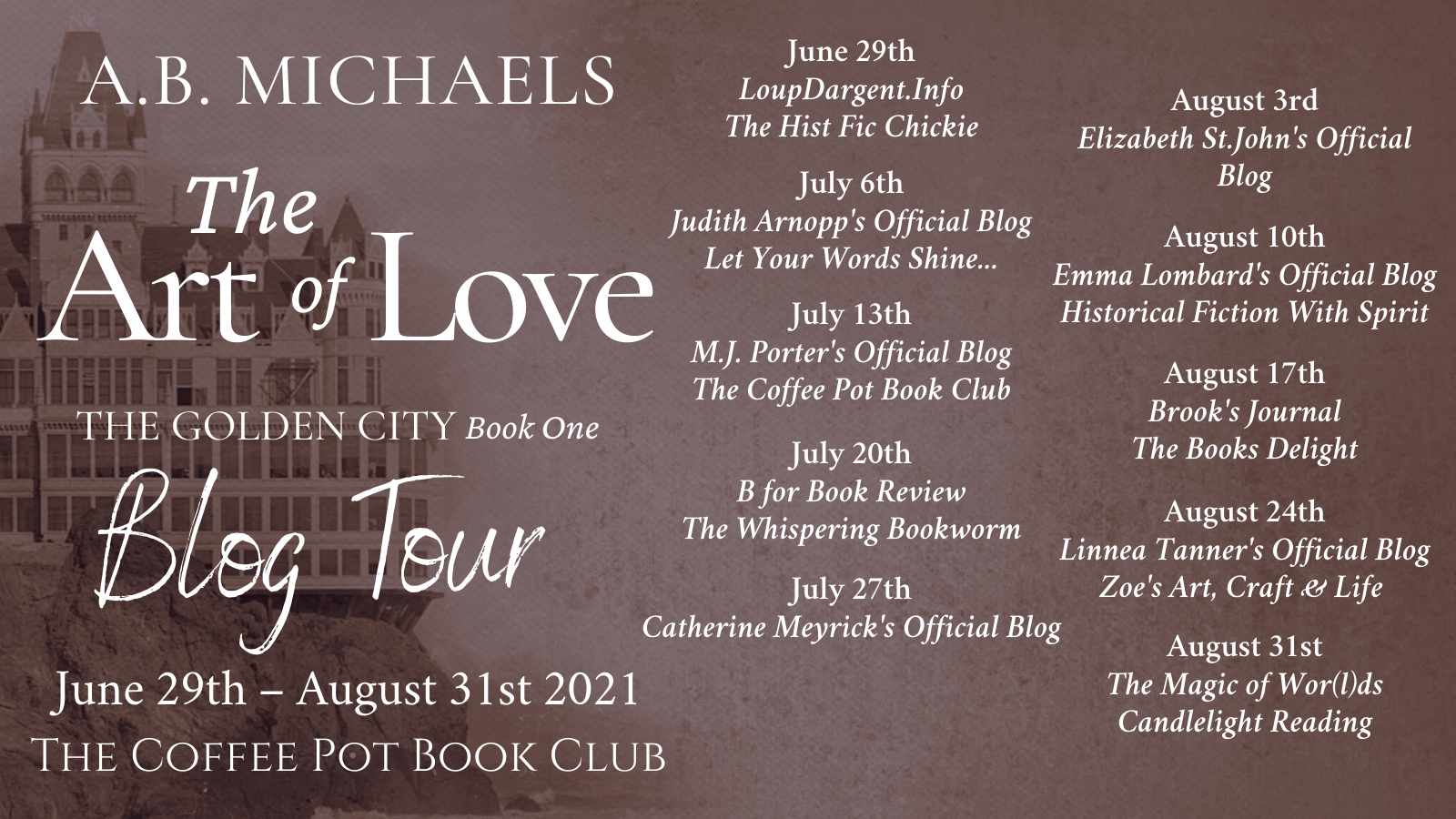
23 Aug A. B. Michaels The Art of Love #HistoricalFiction #BlogTour #CoffeePotBookClub @ABMichaelsBooks @maryanneyarde
FEATURED AUTHOR: A. B. MICHAELS
It is my pleasure to feature A. B. Michaels as part of The Coffee Pot Book Club Blog Tour being held from June 29th – August 31st, 2021. A. B. Michaels is the author of the historical fiction novel, The Art of Love (The Golden City, Book One), which was released by Red Trumpet Press on 4th May 2014 (360 pages).
Below are highlights of The Art of Love, A. B. Michaels’ author bio, and a guest post by her.

FOLLOW THE BLOG TOUR BY CLICKING ART OF LOVE BLOG TOUR
HIGHLIGHTS: THE ART OF LOVE
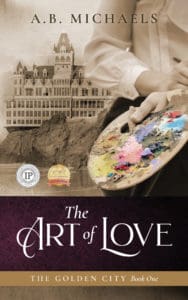
The Art of Love
(The Golden City, Book One)
By A.B. Michaels
Your Journey to The Golden City begins here…
FORTUNE…SACRIFICE…PASSION…and SECRETS
A tale of mystery, social morality and second chances during America’s Gilded Age, The Art of Love will take you on an unforgettable journey from the last frontier of the Yukon Territory to the new Sodom and Gomorrah of its time – the boomtown of San Francisco.
After digging a fortune from the frozen fields of the Klondike, August Wolff heads south to the “Golden City,” hoping to put the unsolved disappearance of his wife and daughter behind him. The turn of the twentieth century brings him even more success, but the distractions of a hedonistic mecca can’t fill the gaping hole in his life.
Amelia Starling is a wildly talented artist caught in the straightjacket of Old New York society. Making a heart-breaking decision, she moves to San Francisco to further her career, all the while living with the pain of a sacrifice no woman should ever have to make.
Brought together by the city’s flourishing art scene, Gus and Lia forge a rare connection. But the past, shrouded in mystery, prevents the two of them from moving forward as one. Unwilling to face society’s scorn, Lia leaves the city and vows to begin again in Europe.
The Golden City offers everything a man could wish for except the answers Gus is desperate to find. But find them he must, or he and Lia have no chance at all.
Buy Links The Golden City Series:
AUTHOR BIO: A. B. MICHAELS

A native of California, A.B. Michaels holds masters’ degrees in history (UCLA) and broadcasting (San Francisco State University). After working for many years as a promotional writer and editor, she turned to writing fiction, which is the hardest thing she’s ever done besides raise two boys. She lives with her husband and two spoiled dogs in Boise, Idaho, where she is often distracted by playing darts and bocce and trying to hit a golf ball more than fifty yards. Reading, quilt-making, and travel figure into the mix as well, leading her to hope that sometime soon, someone invents a 25+ hour day.
Social Media Links:
Website ♦ Twitter ♦ Facebook ♦ Pinterest ♦ BookBub ♦ Amazon Author Page ♦ Goodreads
GUEST POST: A. B. MICHAELS
Gone but not Forgotten: San Francisco’s Amazing Sutro Baths
If you Google “largest swimming pools in the world,” you’ll find a list of mind-boggling, ultra-luxurious man-made complexes that resemble lagoons more than pools. Most are outside and are used for water sports like rowing and kayaking, with only limited sections open for swimmers. Few of them, by the way, are to be found in the United States: https://largest.org/structures/swimming-pools/
But the “granddaddy” of such aquatic complexes did exist in America, more than one hundred years ago. It was located in San Francisco and provides a memorable scene in my novel The Art of Love.
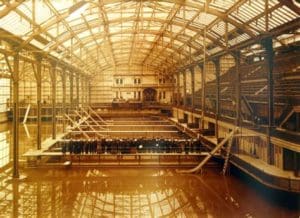
Photo of Sutro Baths
The baths were the brainchild of mining engineer, naturalist, and entrepreneur Adoph Sutro. Having made his fortune in the Comstock Lode, Sutro moved to San Francisco and bought up lots of real estate. He also served a term as mayor. He saw how fast the “Golden City” was growing, and how conditions were becoming crowded for its inhabitants.
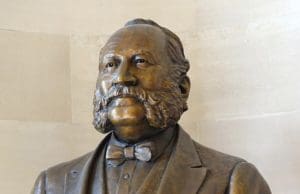
Bust of Adolph Sutro
West of the city, one of Sutro’s prized properties overlooked the Pacific Ocean at a place called “Land’s End.” It was sandy, to be sure, but featured spectacular views of Seal Rocks and Ocean Beach and was the site of a fashionable resort called the Cliff House. Unfortunately, Land’s End was a long way from downtown, so only the rich could afford the stagecoach ride from the city center.
Sutro aimed to change all that. In 1881, he made plans to refurbish the Cliff House and turn it into a family-friendly attraction that customers could visit via his own “Sutro Railroad” which would run between Land’s End and downtown. Despite a devastating fire and other obstacles, he eventually opened the “new” Cliff House in 1896. To many visitors, the renovated restaurant and meeting center looked like a giant gingerbread castle ready to drop into the ocean. Despite (or perhaps because of) its fairytale appearance, it quickly became the “go to” venue for visitors of all income levels who enjoyed dining and dancing by the sea.
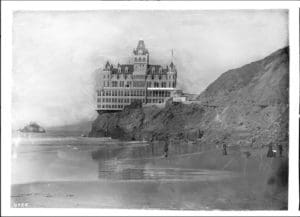
Image of Cliff House
But the Cliff House was only part of Sutro’s plan to attract city dwellers. His more ambitious goal was to build the world’s largest public indoor salt-water swimming and entertainment complex. In 1888 he offered a large cash prize to the firm who could build what he had in mind, and the same architects who’d designed the revamped Cliff House won the commission.
The natatorium took several years and incredible ingenuity to build. One problem, for example, was the proximity to the ocean. It required four attempts before the engineers could design and build a sea wall strong enough to withstand the force of the waves.
When it finally opened in 1896, the Sutro Baths was a magnificent glass-domed complex featuring seven pools (one of which was spring-fed), each heated to a different temperature. Unlike its freshwater counterparts, the saltwater baths used the power of the tides to continuously filter the water. During high tides nearly two million gallons of water would be recycled in about an hour; during low tides, a powerful seal level pump could refill the tanks in about five hours.
It was a swimmer’s paradise, but there was one drawback we might not appreciate today: those wanting to take a dip had to rent bathing suits, which were apparently gray (from over-washing) and floppy—decidedly not the latest fashion. Still, it was no doubt a small price to pay for the ability to join in the fun. Bathers could enter the pools in a variety of ways, including trampolines, flying rings, slides, swings, toboggan slides and diving platforms. Those who weren’t swimming could watch the action from a raised observation deck. That level also had carnival rides and other amusements. Over the years all manner of attractions were staged, from beauty pageants, talent shows, and swimming championships to trapeze acts, magicians, and dwarf boxing matches.
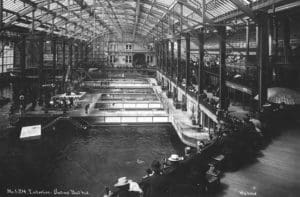
Sutro Baths Photo
As if all that weren’t enough, Sutro offered a natural history museum, art exhibits, an amphitheater for concerts, an ice-skating rink, and restaurants. Had you lived in San Francisco at the turn of the twentieth century, you might have taken the train and spent many a Sunday afternoon frolicking in the water at the Sutro Baths—along with up to ten thousand of your closest friends!
All good people—and good things—must come to an end. Only two years after opening the popular entertainment center, Adolph Sutro died, and his vast holdings fell prey to squabbling heirs.
The Cliff House, which miraculously survived the 1906 Earthquake, was gutted by a mysterious fire in 1907 but rebuilt (in a more sedate style) and stayed in business as a popular restaurant and concession of the National Park Service until Covid 19 policies forced its closure at the end of 2020.
As for the iconic Sutro Baths, it continued to operate for many years, but sadly never made a profit, and eventually was sold to the owner of Playland at the Beach, an amusement park, in 1952. It was closed down for good in 1966 and soon thereafter the giant structure burned to the ground. If you travel to Land’s End today, you can still see the outline of where the Baths stood. [Sutro bath ruins today]
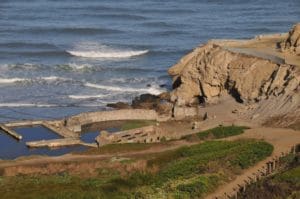
Sutro Baths Ruins Today
What a wonder it must have been.
###
[source: National Park Service, Wikipedia, Historic San Francisco]

Instagram: @coffeepotbookclub


Jan Sikes
Posted at 08:16h, 24 AugustThis sounds like a super compelling story! Thank you for sharing, Linnea. Congrats to A.B. Michaels. I’ve picked up my copy!
Linnea Tanner
Posted at 10:25h, 24 AugustHi Jan–Thank you for visiting and commenting. It’s great to hear that you picked up a copy of her book. Hope you have a lovely week!
A.B. Michaels
Posted at 11:02h, 24 AugustThanks so much for hosting my work!
Linnea Tanner
Posted at 19:01h, 30 AugustIt was a pleasure to host you and learn more about your books. I learned a great deal from your guest blog about the amazing Sutro Baths. Good luck with all of your books!